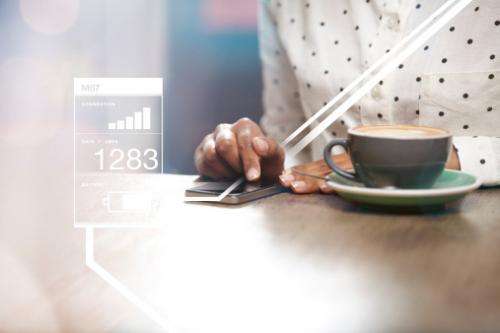November 11, 2014 weblog
Bandwidth-borrowing handsets are in the wings

"Given that data usage is predicted to increase by a factor of 12 by 2017, it's time to re-think the way networks work." That is the message from the Austin, Texas-based company M87 along with some more general messages on their site about their solution. They say they have the world's first carrier-grade device-to-device network. "M87 software flips the traditional network's power structure upside down – shifting network intelligence to the mobile device." The result is that the smartphone can always seek the fastest path to the network.
The software "intelligently" selects the fastest path – either directly to the cellular network or via the device-to-device network. The message for wireless carriers is that such an approach dramatically expands network capacity without the need for additional infrastructure. With over 1 billion smartphones in use worldwide, their software adds smartphones to the network infrastructure. A carrier-grade device-to-device network is created that increases coverage and capacity. As for security, the team is using "tunneling technology" such that "we don't capture, store or see any personal data whatsoever. We're not in the advertising business. We're in the network infrastructure software business."
Last week, Tom Simonite, in a detailed report on the company in MIT Technology Review, said two U.S. mobile carriers looking for ways to improve their mobile data coverage are evaluating the technology. ("M87's technology requires a mobile carrier to pre-install software onto handsets sold for use on its network. That software runs in the background and constantly monitors a device's data signal while looking for nearby devices with the same software," he said, and carriers can tune the rules for when a device will link up with another.)
But what about battery life if one person's device essentially is donating its connectivity to another's device? M87 CEO David Hampton said in MIT Technology Review that the penalty is small. A device is likely to be configured to only share a connection if over 60 percent of its battery life is remaining. According to the report, Hampton said that inside a building, devices can link up over distances of around 30 to 50 feet and outside, to as much as 180 feet.
M87's software is currently only available for Android devices.
The company's technology was invented by Vidur Bhargava and Sriram Vishwanath in the Electrical and Computer Engineering department at the University of Texas at Austin. Bhargava serves as the company's vice president of research. Vishwanath, an associate professor in the ECE department, is on the advisory board.
More information: — www.m-87.com/#rate
© 2014 Tech Xplore

















